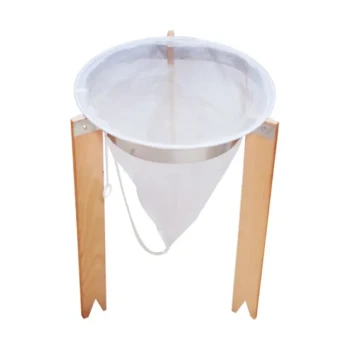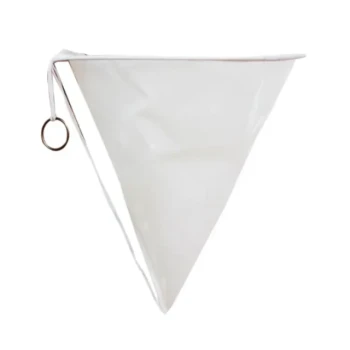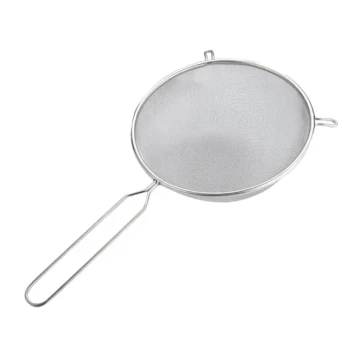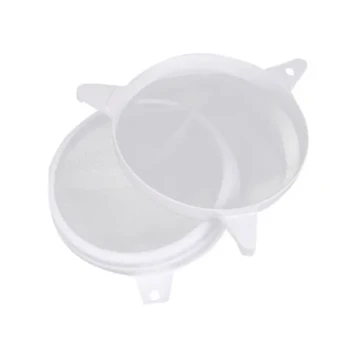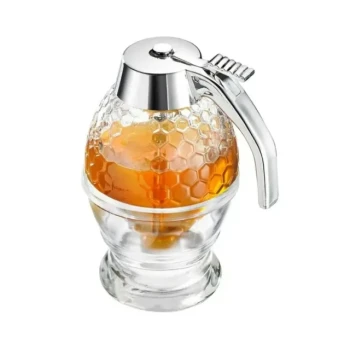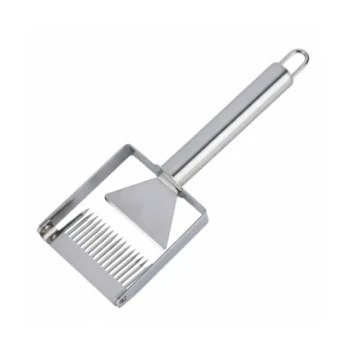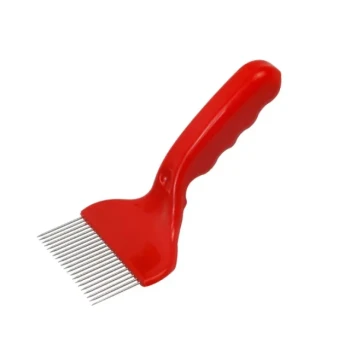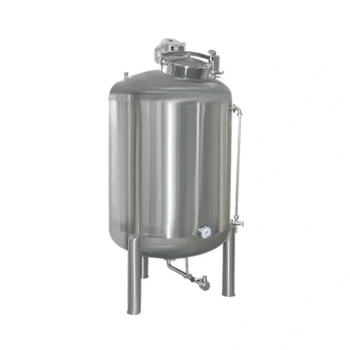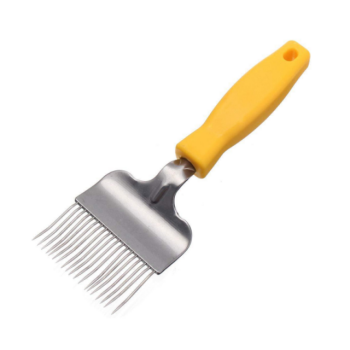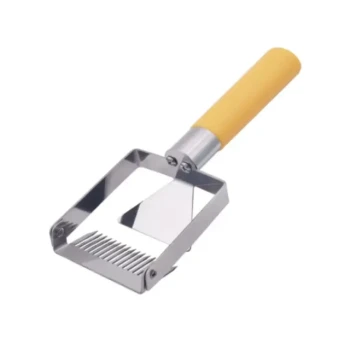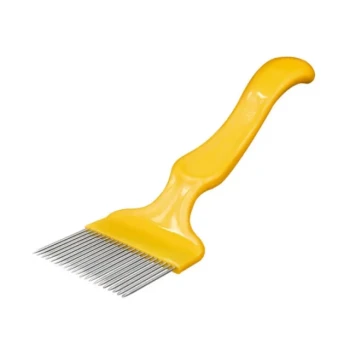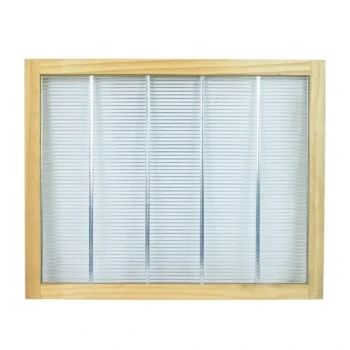To filter unfiltered honey, the most common method is to pass it through a series of progressively finer strainers or filters. This process removes large debris like beeswax and propolis first, followed by smaller particles, resulting in a cleaner final product. For a completely heat-free approach, honey can also be left to settle in a container for several weeks, allowing impurities to naturally rise to the top before the clean honey is drained from the bottom.
The core challenge of filtering honey is not just about removing impurities, but about deciding how much of its natural character—including beneficial pollen and propolis—you wish to retain. Your filtering method directly controls the balance between a pristine appearance and a truly raw product.
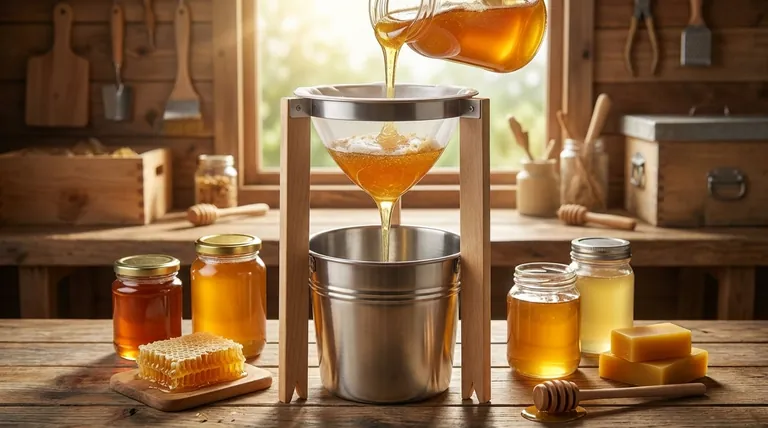
Why Filter Honey?
Before choosing a method, it's crucial to understand the goals of filtering. The process is about more than just aesthetics; it impacts the honey's texture, stability, and consumer appeal.
Removing Physical Debris
Unfiltered honey, direct from the hive, contains various particles. Straining effectively removes visible impurities such as bits of beeswax, fragments of propolis, and other hive debris.
Achieving Clarity and Smoothness
For many, the ideal honey is crystal clear and smooth. Filtering removes the fine, suspended particles that can make honey appear cloudy, delivering the clean, polished look many consumers expect.
Slowing Down Crystallization
Fine particles, including pollen grains and tiny wax crystals, can act as nucleation points, which are starting points for the crystallization process. By removing them, fine filtering can help keep honey in a liquid state for longer.
The Two Primary Filtering Methods
There are two main approaches to cleaning raw honey, each with its own benefits. They can be used separately or in combination.
Method 1: Gravity Straining
This is the most active and immediate method for cleaning honey. It relies on gravity to pull the liquid honey through one or more filters.
The standard practice involves a double-sieve system. A coarse filter on top catches large debris, while a finer mesh filter below catches smaller particles. This progressive approach prevents the fine filter from clogging too quickly.
You can repeat this process with even finer meshes to achieve greater clarity, though this will also remove more of the natural pollen.
Method 2: Gravity Settling
This is a passive, patient, and heat-free method for clarifying honey. It leverages the different densities of honey and its impurities.
The honey is placed in a tall container, often a bottling tank with a gate valve at the bottom. Over a period of one to three weeks, lighter particles like wax and foam will slowly rise to the top, while heavier debris may sink.
Once settling is complete, the clear honey is drained from the bottom valve, leaving the layer of impurities at the top behind.
Understanding the Trade-offs
Filtering honey is not a one-size-fits-all process. The choices you make have direct consequences on the final product's character and composition.
The Impact of Mesh Size
A coarse strainer will remove obvious debris while leaving most of the natural pollen and fine propolis. An ultra-fine filter will produce exceptionally clear honey but will also strip out almost all of the pollen, which many consumers of raw honey specifically seek out.
The Role of Heat
Gently warming honey (not to be confused with pasteurization) lowers its viscosity, making it flow much faster through filters. However, excessive heat can destroy the delicate enzymes and volatile aromatic compounds that give raw honey its unique flavor and health benefits. If using heat, it must be done with extreme care.
Retaining Beneficial Components
Raw, unfiltered honey's reputation is built on the presence of pollen, propolis, and natural enzymes. Every level of filtering removes some of these components. The goal is to find the right balance for your specific purpose.
Choosing the Right Filtering Level for Your Goal
Your final decision should be guided by what you want to achieve with your honey.
- If your primary focus is preserving the most natural, raw state: Use only a coarse, food-grade strainer to remove the largest pieces of wax and debris.
- If your primary focus is a clear, smooth product for sale or gifts: Employ a multi-stage straining system, moving from a coarse to a fine mesh filter.
- If your primary focus is a pure, heat-free product with maximum clarity: Use the gravity settling method, understanding it requires patience and the right equipment.
By understanding these methods and their trade-offs, you can refine your honey to the exact standard your goal requires.
Summary Table:
| Method | Process | Best For | Key Consideration |
|---|---|---|---|
| Gravity Straining | Pass honey through coarse to fine filters. | Quick clarification; removing visible debris. | Faster process; finer filters remove more pollen. |
| Gravity Settling | Let honey sit for weeks; impurities rise/settle. | Heat-free, pure product; maximum clarity. | Requires patience and specific equipment (bottling tank). |
Ready to scale your honey production with professional-grade equipment?
HONESTBEE supplies commercial apiaries and beekeeping equipment distributors with the durable, high-capacity tools needed for efficient filtering and bottling. Whether you need coarse strainers, fine filters, or settling tanks, our wholesale-focused operations provide the reliable equipment to maintain your honey's quality at scale.
Contact HONESTBEE today to discuss your commercial beekeeping supply needs and get a quote!
Visual Guide
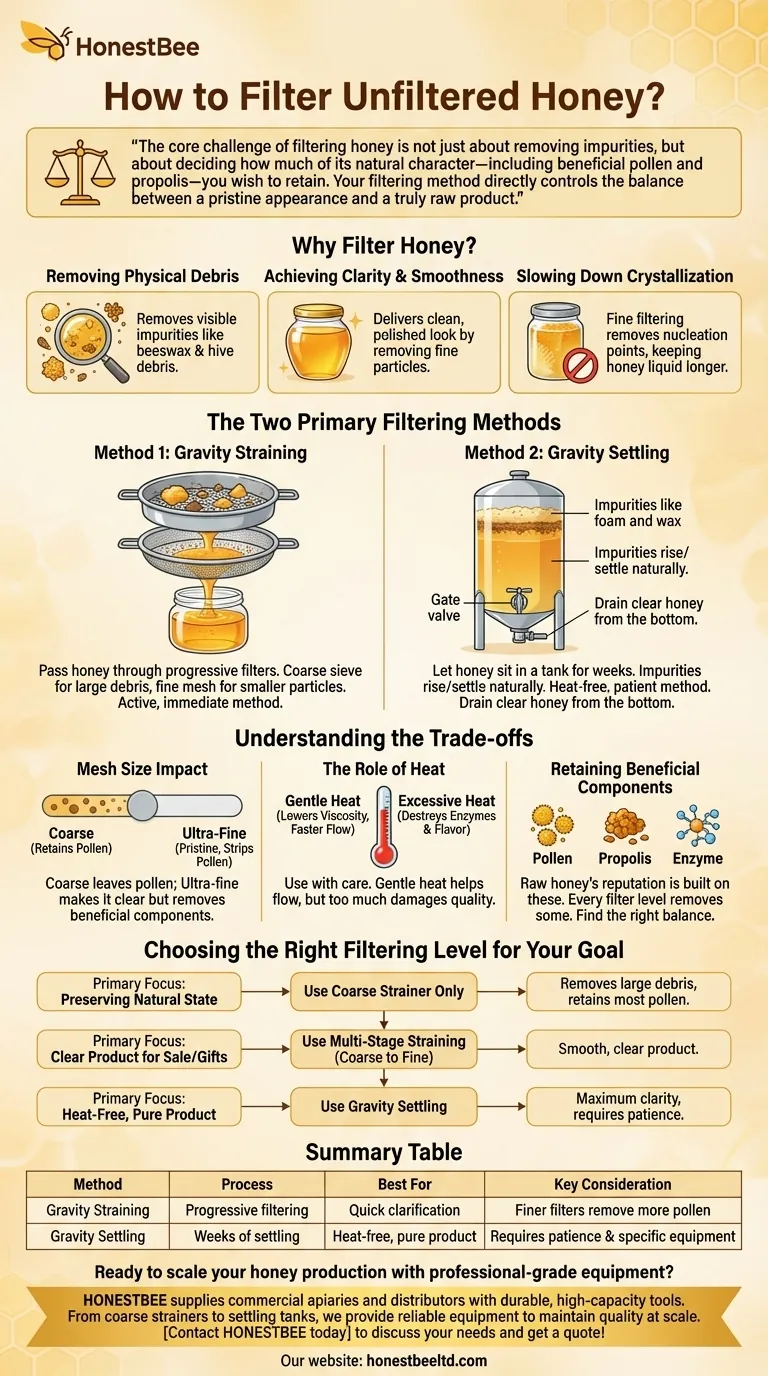
Related Products
- Professional Honey Filter with Tripod Support Stand
- Professional Cone-Shaped Honey Filter with Reinforced Steel Ring
- Professional Stainless Steel Honey Filter with Support Handle
- Two-Stage Plastic Honey Filter for Buckets
- Nylon Honey Strainer Square Filter Cloth for Honey Filters
People Also Ask
- Why is it important to inspect and replace filters in honey filtering equipment? Protect Your Honey Quality & Equipment
- Why is filtering honey an important step in honey processing? Ensure Purity, Clarity & Marketability
- What is better, a 100 or 200 micron filter? Find the Right Fit for Your Water System
- Why is filtering honey considered an essential step in honey processing? Ensure Quality and Commercial Viability
- What is the role of filtration in honey processing? Ensure Purity, Clarity, and Shelf Life
